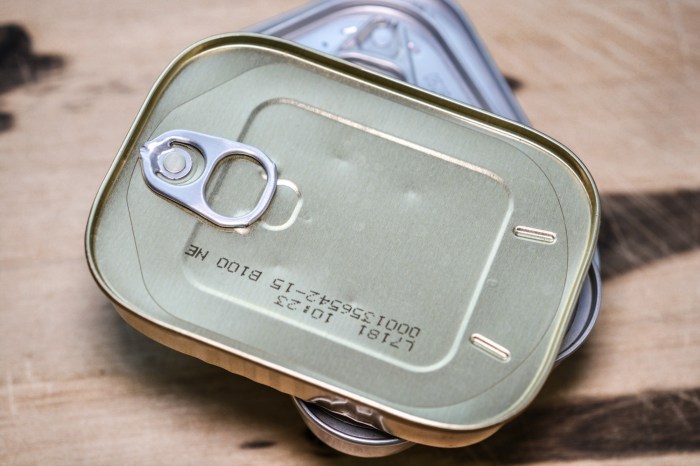How to make hermetic seal – Hermetic seals are essential components in various industries, providing airtight and watertight protection for sensitive devices and systems. This comprehensive guide will delve into the world of hermetic sealing, exploring its definition, purpose, materials, techniques, design considerations, testing methods, and applications.
Definition and Purpose of Hermetic Seals
Hermetic seals are airtight and watertight barriers that prevent the passage of gases, liquids, or contaminants between two surfaces. They are essential for applications where the integrity of a system or component is paramount.
Hermetic seals are used in a wide range of industries, including aerospace, medical, automotive, and electronics. They are critical for ensuring the reliability and performance of sensitive equipment, such as satellites, medical implants, and high-power electronics.
Advantages and Disadvantages of Hermetic Seals
- Advantages:
- Prevent contamination and moisture ingress
- Maintain system integrity and performance
- Extend equipment lifespan
- Enhance reliability and safety
- Disadvantages:
- Can be expensive to implement
- May require specialized equipment and expertise
- Can add weight and complexity to systems
Materials and Equipment for Hermetic Sealing
Materials
- Metals:Stainless steel, aluminum, copper, and nickel alloys are commonly used for hermetic seals due to their strength, corrosion resistance, and thermal conductivity.
- Glass:Borosilicate glass and fused silica are often used for hermetic seals in applications requiring high transparency and chemical resistance.
- Polymers:Elastomers, such as silicone and Viton, are used for hermetic seals in applications requiring flexibility and low outgassing.
Equipment
- Soldering and Welding:Soldering and welding are common techniques for creating hermetic seals between metal surfaces.
- Adhesive Bonding:Adhesive bonding is used for hermetic sealing of dissimilar materials or surfaces that cannot be soldered or welded.
- Vacuum Chambers:Vacuum chambers are used to remove air and other contaminants from the sealing area before the seal is made.
Techniques for Hermetic Sealing: How To Make Hermetic Seal
Soldering
Soldering involves joining two metal surfaces using a molten solder alloy. The solder alloy melts and flows between the surfaces, forming a strong and airtight bond.
Welding
Welding involves joining two metal surfaces by melting them together using a heat source. Welding creates a permanent and hermetic bond between the surfaces.
Adhesive Bonding

Adhesive bonding involves applying an adhesive to the surfaces to be sealed. The adhesive cures and forms a strong and airtight bond between the surfaces.
Design Considerations for Hermetic Seals

Geometry
The geometry of the hermetic seal is crucial for its effectiveness. The seal should be designed to minimize stress concentrations and potential leak paths.
Materials Compatibility
The materials used for the hermetic seal should be compatible with each other and with the environment in which the seal will be used.
Environmental Factors
The hermetic seal should be designed to withstand the environmental factors it will be exposed to, such as temperature, humidity, and vibration.
Testing and Validation of Hermetic Seals
Leak Testing
Leak testing is used to verify the integrity of hermetic seals. Common leak testing methods include helium leak testing, pressure decay testing, and bubble testing.
Visual Inspection, How to make hermetic seal
Visual inspection is used to check for any defects or damage to the hermetic seal.
Applications of Hermetic Seals
Aerospace
Hermetic seals are used in aerospace applications to protect sensitive electronic components from the harsh environment of space.
Medical
Hermetic seals are used in medical applications to protect medical devices and implants from contamination and moisture ingress.
Automotive

Hermetic seals are used in automotive applications to protect electronic components from the harsh environment of the engine compartment.
Electronics
Hermetic seals are used in electronics applications to protect sensitive electronic components from moisture and other contaminants.
Helpful Answers
What is the purpose of a hermetic seal?
Hermetic seals are designed to prevent the ingress or egress of air, moisture, or other contaminants, ensuring the integrity and functionality of sensitive components or systems.
What materials are commonly used for hermetic seals?
Metals such as stainless steel, aluminum, and titanium are frequently used for hermetic seals due to their excellent corrosion resistance and ability to withstand high pressures.
How are hermetic seals tested?
Hermetic seals are subjected to rigorous testing methods such as helium leak detection, pressure testing, and visual inspection to ensure their integrity and reliability.
